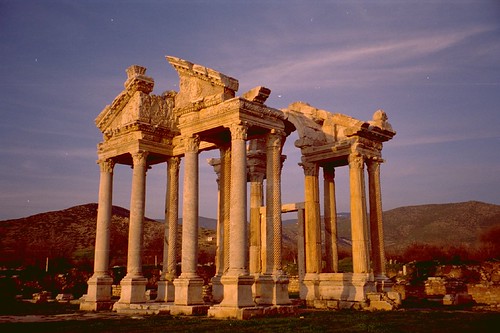 Named after the Greek goddess of love and fertility, Aphrodisias was named in 2BC century, and the Temple of Aphrodite was built in the 1st Century AD. Captured in this photograph by balavenise, we can see the beauty in the relic of it’s glowing stone against the dusk purple sky.
Named after the Greek goddess of love and fertility, Aphrodisias was named in 2BC century, and the Temple of Aphrodite was built in the 1st Century AD. Captured in this photograph by balavenise, we can see the beauty in the relic of it’s glowing stone against the dusk purple sky.
In Roman times, Aphrodisias flourished thanks to the benefit of investment in the area, and a town was built with the temple as a focal point. The town became famous for its marble crafting skills (partly due to the copious amounts of marble found in the area), and sculptures produced in the area were transported as far as North Africa to Rome.
The area was a Pagan stronghold as Christianity spread across the region, but eventually the town was renamed to Stavropoli – City of the Cross – and the temple was altered to become a Christian basilica. Eventually, the church was eventually destroyed, likely during raids in the late 12th Century AD by Seljuk Turks.
Today, all that remains is the double tetrapylonor (or monumental gate) which is the subject of balavenise’s stunning image. Many statues and sculptures have been found in the area, and in addition to the remains of the temple, there is a stadium and the relic of a bathhouse.An excavation in 1961 also uncovered several other finds, including a theatre, a market, houses and baths, a monumental gateway, and a Roman emperor’s sanctuary for worship.
Read more about the Temple of Aphrodite here at Heritage Key, and have a look at balavenise’s photostream on Flickr!
